What are the pros and the cons of New World and Old World Cichlids? Of course both are different, but I wanna know what are the pros and the cons of each in your opinions? Cuz your 'cons' might be 'pros' to others, or your 'pros' might be 'cons' to others. People have different opinions after all. I just wanna know yours. The question might be too broad, but I meant, in general.
Pros and Cons of New World Cichlids and Pros and Cons of Old World Cichlids.
- Thread starter Fanatic_Fish_Lunatic
- Start date
You are using an out of date browser. It may not display this or other websites correctly.
You should upgrade or use an alternative browser.
You should upgrade or use an alternative browser.
I have kept both.
The biggest difference, comes from the density of cichlids the rift lakes, compared to Central American riverine cichlids.
In the rift lakes, cichlids dominate the populations, of fish species, where many species share habitats with other cichlids,
In Central America, in the rivers or even lakes,, fish populations are dominated by Characins, andin a certain river or Cenote only one or 2 cichlids share habitat.
In the video below, Eden Cenote in the Riviera Maya, Mollies dominate and the cichlid population is dominated by prectically only 1 cichlid, Rocio (Jack Dempseys).
In another Cenote not far away, Mayaheros urophthalmus dominate, and the non-cichlid gambusia share habitat.
In a smaller Cenote (maybe ony 10,000 gallons) where both JDs and Uro's are forced to share habitat, there is conflict, both species are constantly torn up.
In Panama where I live and collect, in certain centrally situated rivers, Andinoacara dominate the cichlids population, and tetras outnumer cichlids perhaps 100 tetras to every
2 cichlids.
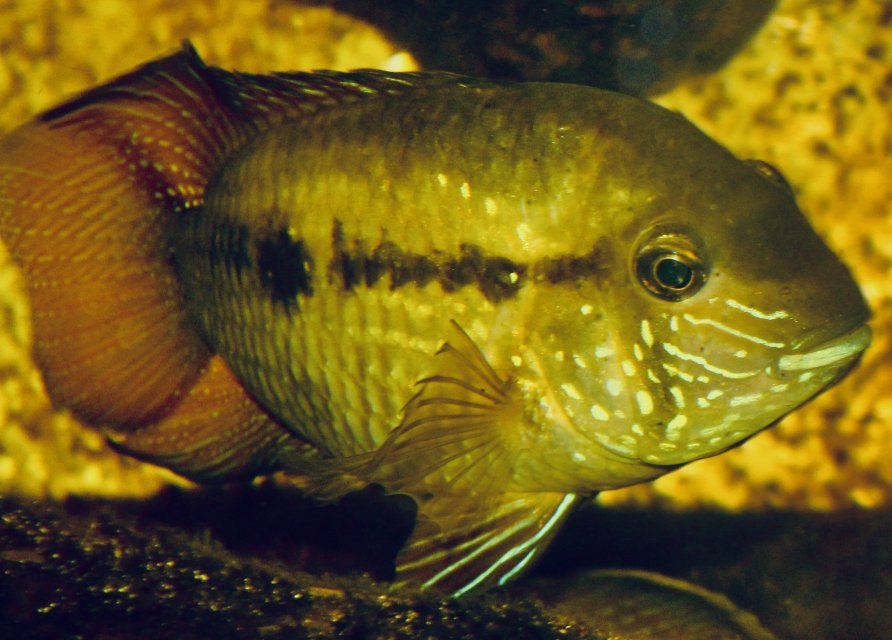
In a more eastern river,(the Pacora), I have only found 2 cichlid species so far, Andinoacara that inhabit slower moving current areas, along the banks,
(above note the tetra ratioo, compared to cichlid
and in the Pacoro, Isthmoheros where they are found mostly mid stream, a stronger flow habitat

And te further east I go toward the Darien, 3 species can be found, but again, they each reside in separate flow rate habitat.
Here the Datenheros are common, and inhabit, rheophillic (almost rapids ) areas.
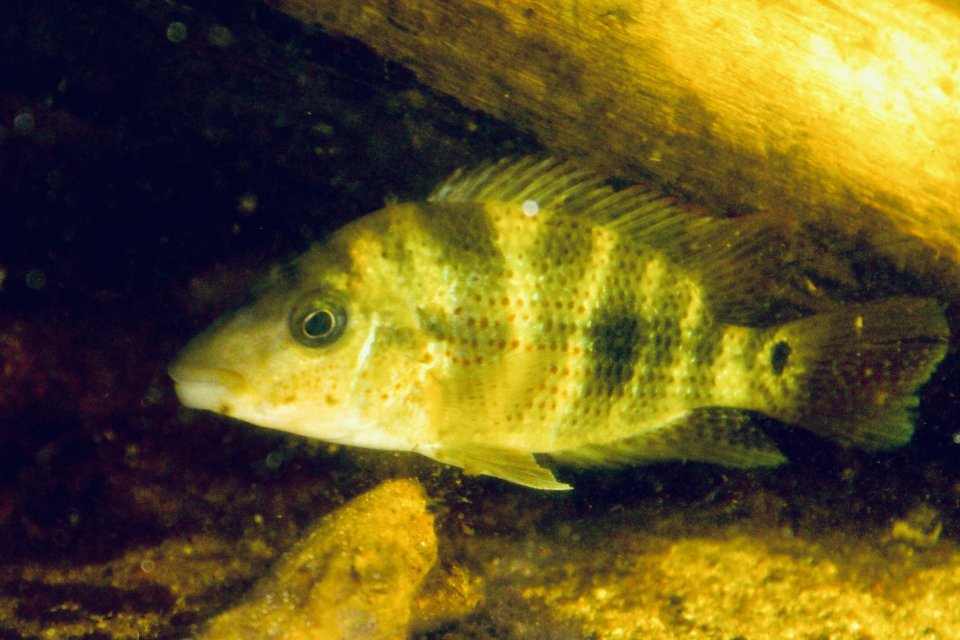
Last weekend we collected in the Rio Uni, only 3 cichlids wre caught, over 3 hours, while during that same time, over 50 tetras were landed.
In S America, in large rivers such as the Amazon, cichlid densities are higher, but...
in smaller rivers west of the Andes (much like those rivers in Central America) fewer cichlid species share habits.
In certain rivers of western Ecuador, you may only find 2 or 3 cichlid species, Andinoacara, and Mesoheros.
The biggest difference, comes from the density of cichlids the rift lakes, compared to Central American riverine cichlids.
In the rift lakes, cichlids dominate the populations, of fish species, where many species share habitats with other cichlids,
In Central America, in the rivers or even lakes,, fish populations are dominated by Characins, andin a certain river or Cenote only one or 2 cichlids share habitat.
In the video below, Eden Cenote in the Riviera Maya, Mollies dominate and the cichlid population is dominated by prectically only 1 cichlid, Rocio (Jack Dempseys).
In Panama where I live and collect, in certain centrally situated rivers, Andinoacara dominate the cichlids population, and tetras outnumer cichlids perhaps 100 tetras to every
2 cichlids.

In a more eastern river,(the Pacora), I have only found 2 cichlid species so far, Andinoacara that inhabit slower moving current areas, along the banks,
and in the Pacoro, Isthmoheros where they are found mostly mid stream, a stronger flow habitat

And te further east I go toward the Darien, 3 species can be found, but again, they each reside in separate flow rate habitat.
Here the Datenheros are common, and inhabit, rheophillic (almost rapids ) areas.

Last weekend we collected in the Rio Uni, only 3 cichlids wre caught, over 3 hours, while during that same time, over 50 tetras were landed.
In S America, in large rivers such as the Amazon, cichlid densities are higher, but...
in smaller rivers west of the Andes (much like those rivers in Central America) fewer cichlid species share habits.
In certain rivers of western Ecuador, you may only find 2 or 3 cichlid species, Andinoacara, and Mesoheros.
Love your works, that's got to be some nice cameras!I have kept both.
The biggest difference, comes from the density of cichlids the rift lakes, compared to Central American riverine cichlids.
In the rift lakes, cichlids dominate the populations, of fish species, where many species share habitats with other cichlids,
In Central America, in the rivers or even lakes,, fish populations are dominated by Characins, andin a certain river or Cenote only one or 2 cichlids share habitat.
In the video below, Eden Cenote in the Riviera Maya, Mollies dominate and the cichlid population is dominated by prectically only 1 cichlid, Rocio (Jack Dempseys).
In another Cenote not far away, Mayaheros urophthalmus dominate, and the non-cichlid gambusia share habitat.
In a smaller Cenote (maybe ony 10,000 gallons) where both JDs and Uro's are forced to share habitat, there is conflict, both species are constantly torn up.
In Panama where I live and collect, in certain centrally situated rivers, Andinoacara dominate the cichlids population, and tetras outnumer cichlids perhaps 100 tetras to every
2 cichlids.
View attachment 1566456
In a more eastern river,(the Pacora), I have only found 2 cichlid species so far, Andinoacara that inhabit slower moving current areas, along the banks,
(above note the tetra ratioo, compared to cichlid
and in the Pacoro, Isthmoheros where they are found mostly mid stream, a stronger flow habitat
View attachment 1566457
And te further east I go toward the Darien, 3 species can be found, but again, they each reside in separate flow rate habitat.
Here the Datenheros are common, and inhabit, rheophillic (almost rapids ) areas.
View attachment 1566458
Last weekend we collected in the Rio Uni, only 3 cichlids wre caught, over 3 hours, while during that same time, over 50 tetras were landed.
In S America, in large rivers such as the Amazon, cichlid densities are higher, but...
in smaller rivers west of the Andes (much like those rivers in Central America) fewer cichlid species share habits.
In certain rivers of western Ecuador, you may only find 2 or 3 cichlid species, Andinoacara, and Mesoheros.
Just curious, do you have any other kind of fish that you like THIS much besides cichlids?I have kept both.
The biggest difference, comes from the density of cichlids the rift lakes, compared to Central American riverine cichlids.
In the rift lakes, cichlids dominate the populations, of fish species, where many species share habitats with other cichlids,
In Central America, in the rivers or even lakes,, fish populations are dominated by Characins, andin a certain river or Cenote only one or 2 cichlids share habitat.
In the video below, Eden Cenote in the Riviera Maya, Mollies dominate and the cichlid population is dominated by prectically only 1 cichlid, Rocio (Jack Dempseys).
In another Cenote not far away, Mayaheros urophthalmus dominate, and the non-cichlid gambusia share habitat.
In a smaller Cenote (maybe ony 10,000 gallons) where both JDs and Uro's are forced to share habitat, there is conflict, both species are constantly torn up.
In Panama where I live and collect, in certain centrally situated rivers, Andinoacara dominate the cichlids population, and tetras outnumer cichlids perhaps 100 tetras to every
2 cichlids.
View attachment 1566456
In a more eastern river,(the Pacora), I have only found 2 cichlid species so far, Andinoacara that inhabit slower moving current areas, along the banks,
(above note the tetra ratioo, compared to cichlid
and in the Pacoro, Isthmoheros where they are found mostly mid stream, a stronger flow habitat
View attachment 1566457
And te further east I go toward the Darien, 3 species can be found, but again, they each reside in separate flow rate habitat.
Here the Datenheros are common, and inhabit, rheophillic (almost rapids ) areas.
View attachment 1566458
Last weekend we collected in the Rio Uni, only 3 cichlids wre caught, over 3 hours, while during that same time, over 50 tetras were landed.
In S America, in large rivers such as the Amazon, cichlid densities are higher, but...
in smaller rivers west of the Andes (much like those rivers in Central America) fewer cichlid species share habits.
In certain rivers of western Ecuador, you may only find 2 or 3 cichlid species, Andinoacara, and Mesoheros.
I don't know if its a question of like.
When I lived in the US, I kept @ 20 tanks, most were 6 ft long, and each would hold pair of large cichlids (and maybe their spawns).
I would sometimes kept biotopes, if cichlids were compact enough, and because they each have different needs, I tried to respect native habitats.
There were Uruguayan biotopes, that required cool downs for winter.
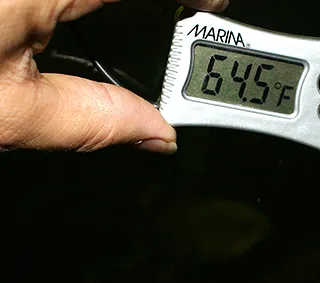
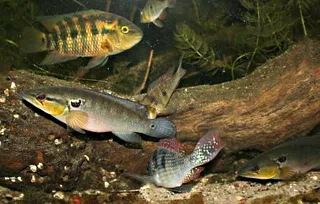
A Lake Barumbi Mbo biotope,only fcichlids from that lake
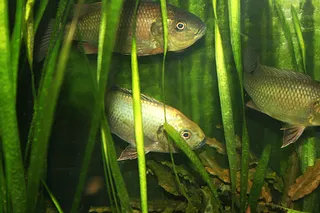
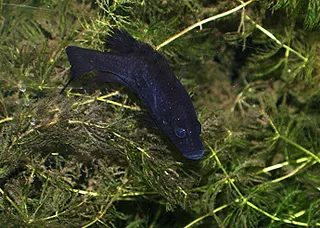
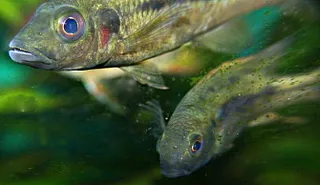
And a Madagascan Biotope
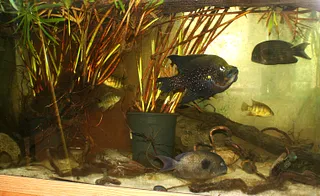
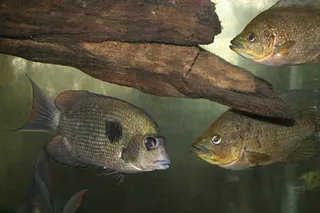
I have always tried to be consious of continental accuracy, not just randomly throwing fish togther
The longer I live here, and see them in nature, its become about doing whats apropos for the species I collect, whats closest to how they live..
and become even more conscious that fish from eastern rivers don't mix with even rivers 20 miles west.
So my favorites are about combining ratios of speciies that belong together, not just cichlids.
Armored catfish like Sturomatichthys

With Gobies from the same stream
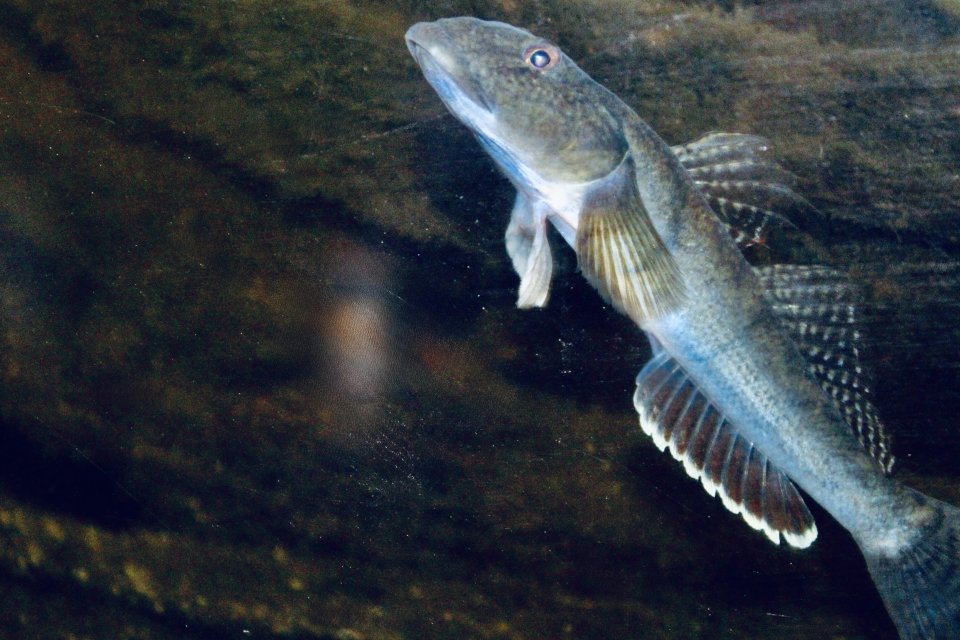
With cichlids in the same habitat
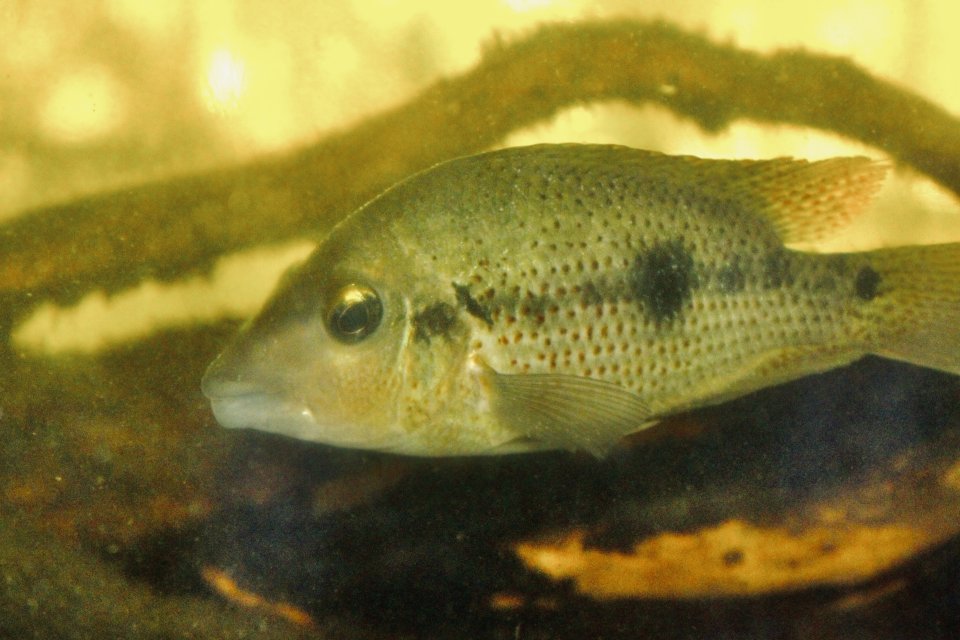
With a ratio of dither species i the tank (mostly tetras)thar make all feel commfortable.
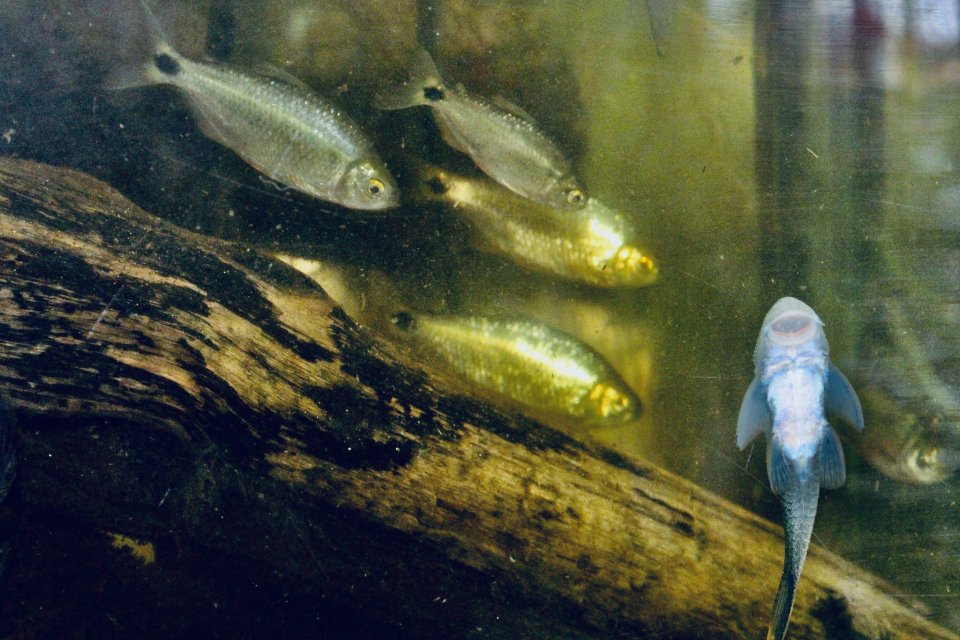
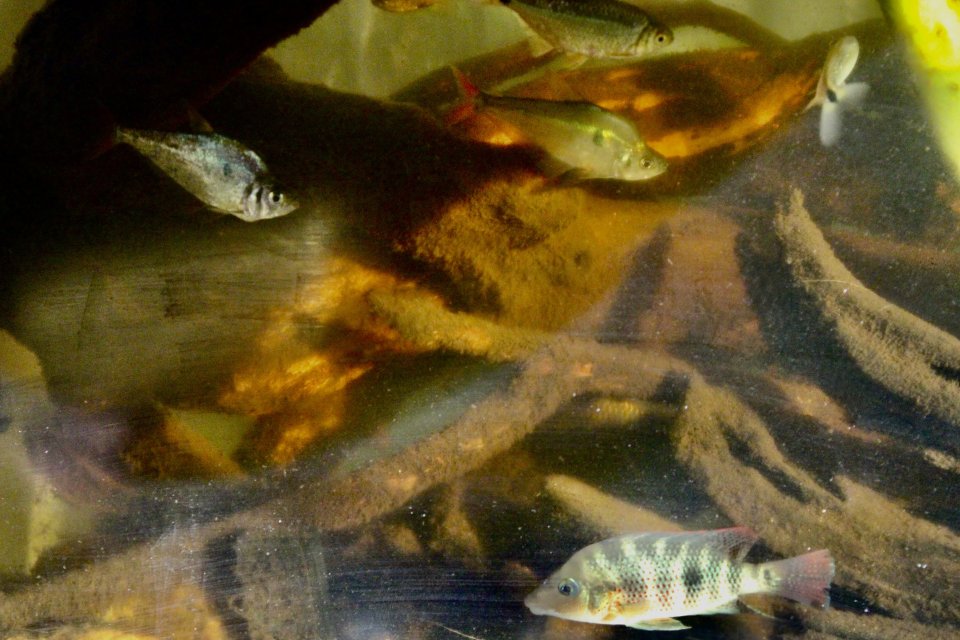
When I lived in the US, I kept @ 20 tanks, most were 6 ft long, and each would hold pair of large cichlids (and maybe their spawns).
I would sometimes kept biotopes, if cichlids were compact enough, and because they each have different needs, I tried to respect native habitats.
There were Uruguayan biotopes, that required cool downs for winter.


A Lake Barumbi Mbo biotope,only fcichlids from that lake



And a Madagascan Biotope


I have always tried to be consious of continental accuracy, not just randomly throwing fish togther
The longer I live here, and see them in nature, its become about doing whats apropos for the species I collect, whats closest to how they live..
and become even more conscious that fish from eastern rivers don't mix with even rivers 20 miles west.
So my favorites are about combining ratios of speciies that belong together, not just cichlids.
Armored catfish like Sturomatichthys

With Gobies from the same stream

With cichlids in the same habitat

With a ratio of dither species i the tank (mostly tetras)thar make all feel commfortable.


Last edited:
To me trying to generalize pros and cons between old and new world cichlids requires a bit stereotyping. Rift lake cichlids are more colorful, except. New world cichlids have more interesting, diverse behavior, except. Rift lake fish are more aggressive, except. African cichlids like high pH, hard water, except. South American cichlids are low pH, soft water fish, except.
Favorite type of fish besides cichlids? For me that's easy, plecos. For example, I have a tank with Geophagus sveni, Heros notatus, and Rio Essequibo "Guyana red dragon" angelfish, all nice fish and I like them all, but the star of the tank for me is the L14 pleco. And don't let anyone tell you plecos all produce massive waste, that very much depends on type. Common plecos, royal plecos, some of the cactus plecos, absolutely, but some others no more than an average cichlid of similar size.
Favorite type of fish besides cichlids? For me that's easy, plecos. For example, I have a tank with Geophagus sveni, Heros notatus, and Rio Essequibo "Guyana red dragon" angelfish, all nice fish and I like them all, but the star of the tank for me is the L14 pleco. And don't let anyone tell you plecos all produce massive waste, that very much depends on type. Common plecos, royal plecos, some of the cactus plecos, absolutely, but some others no more than an average cichlid of similar size.


